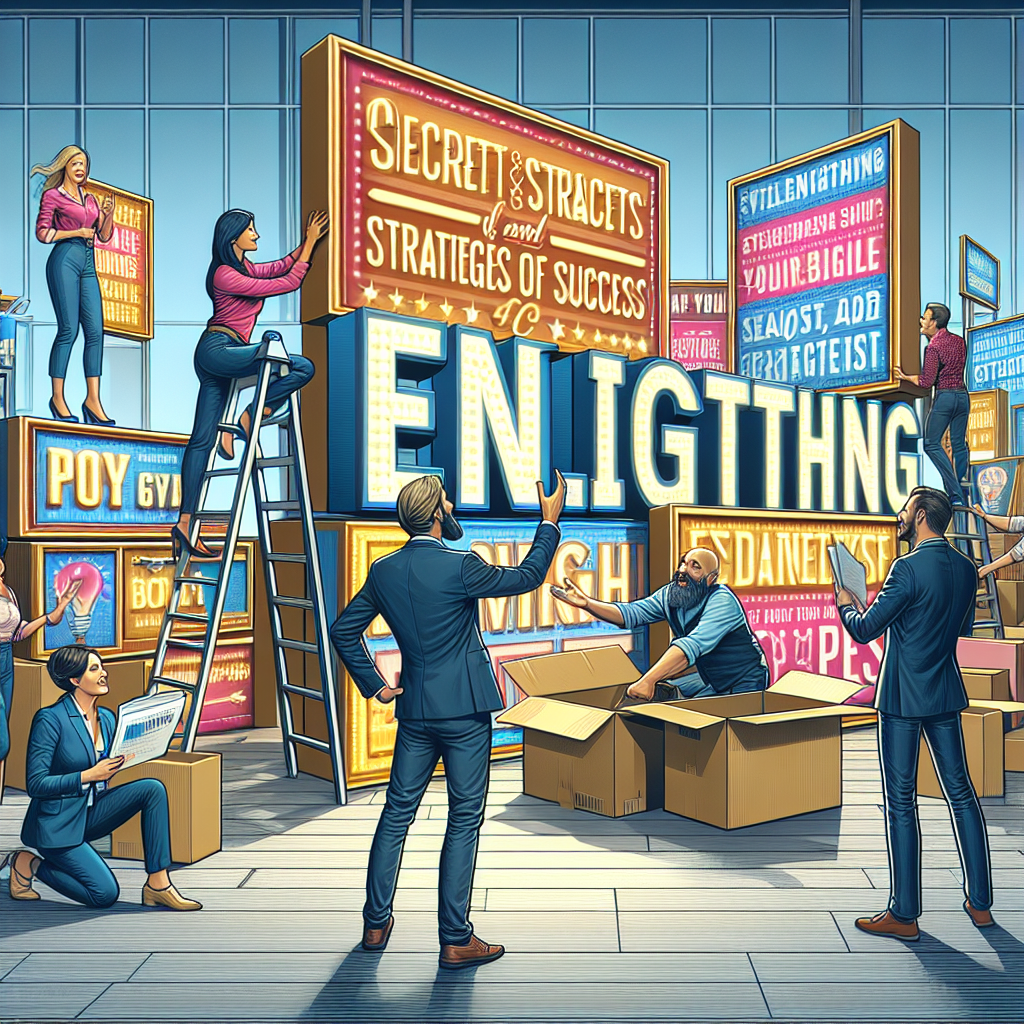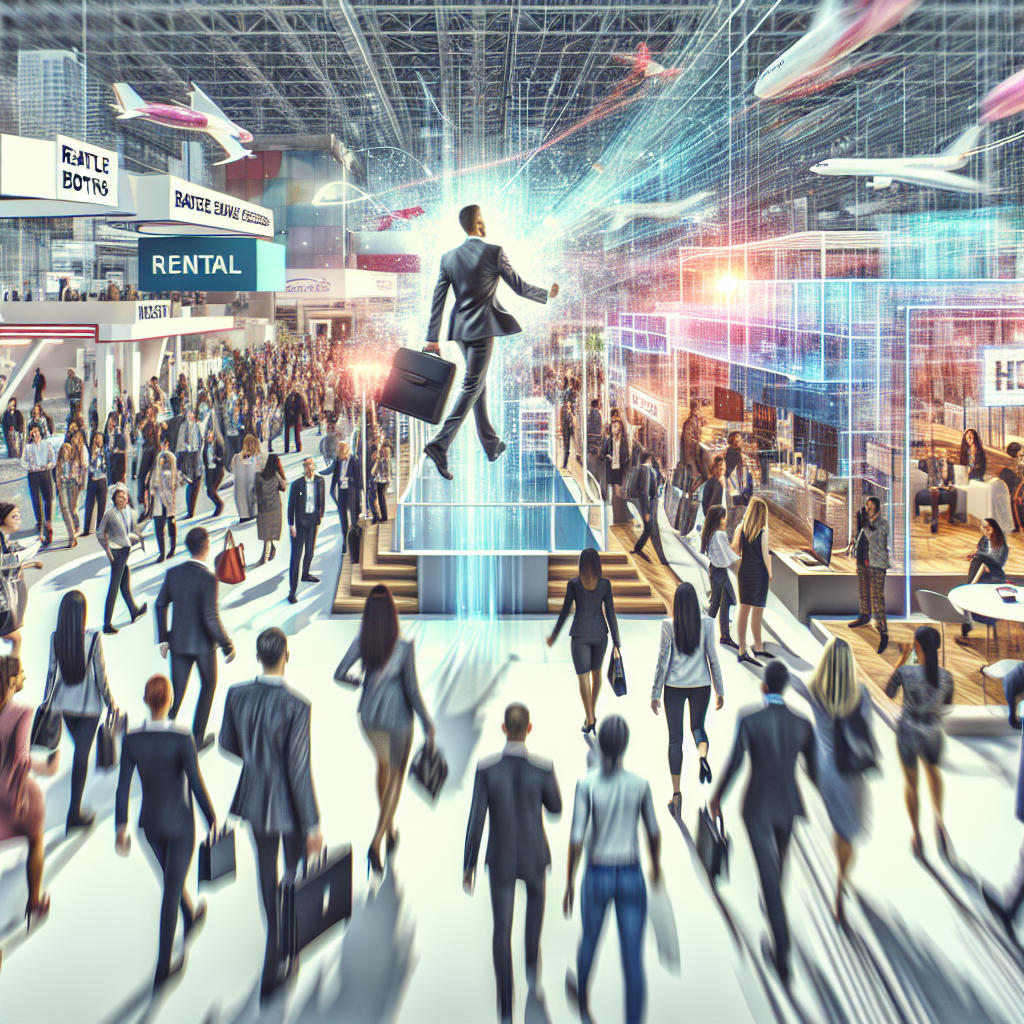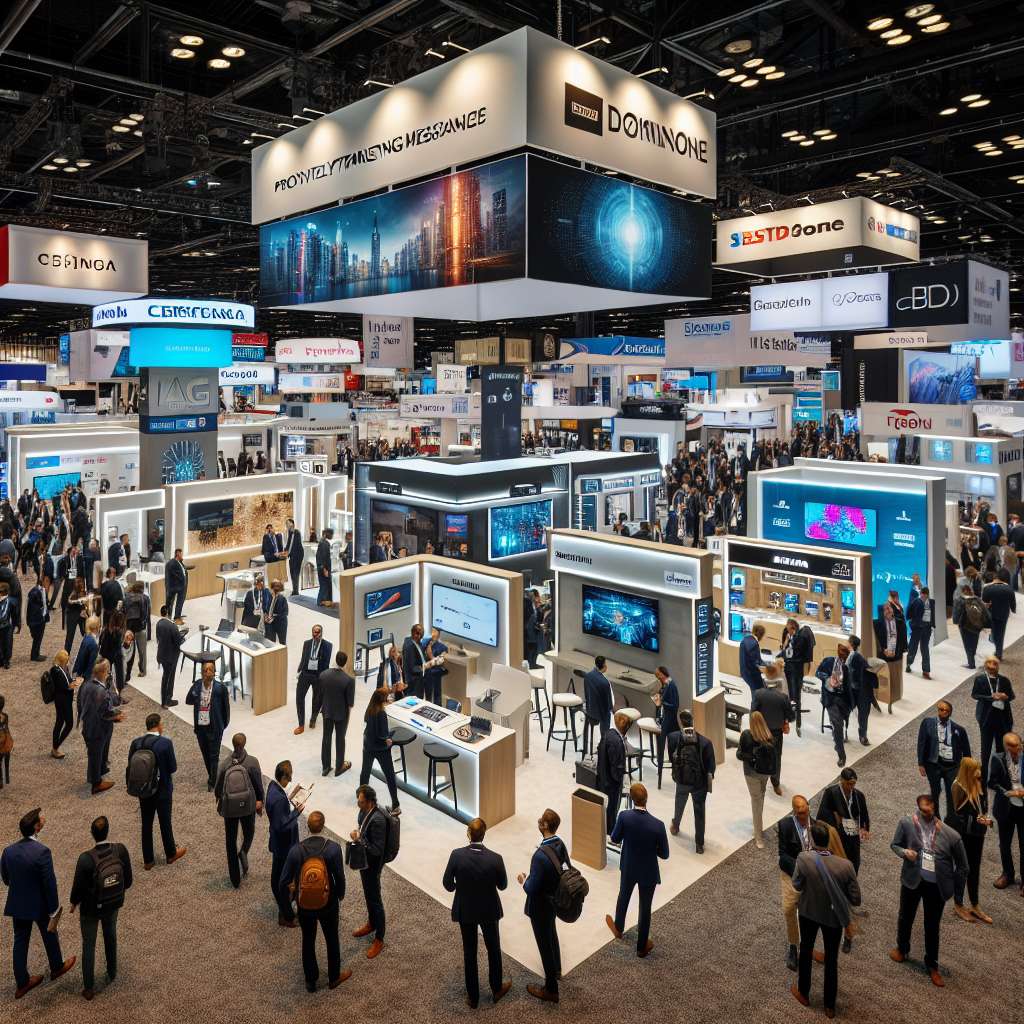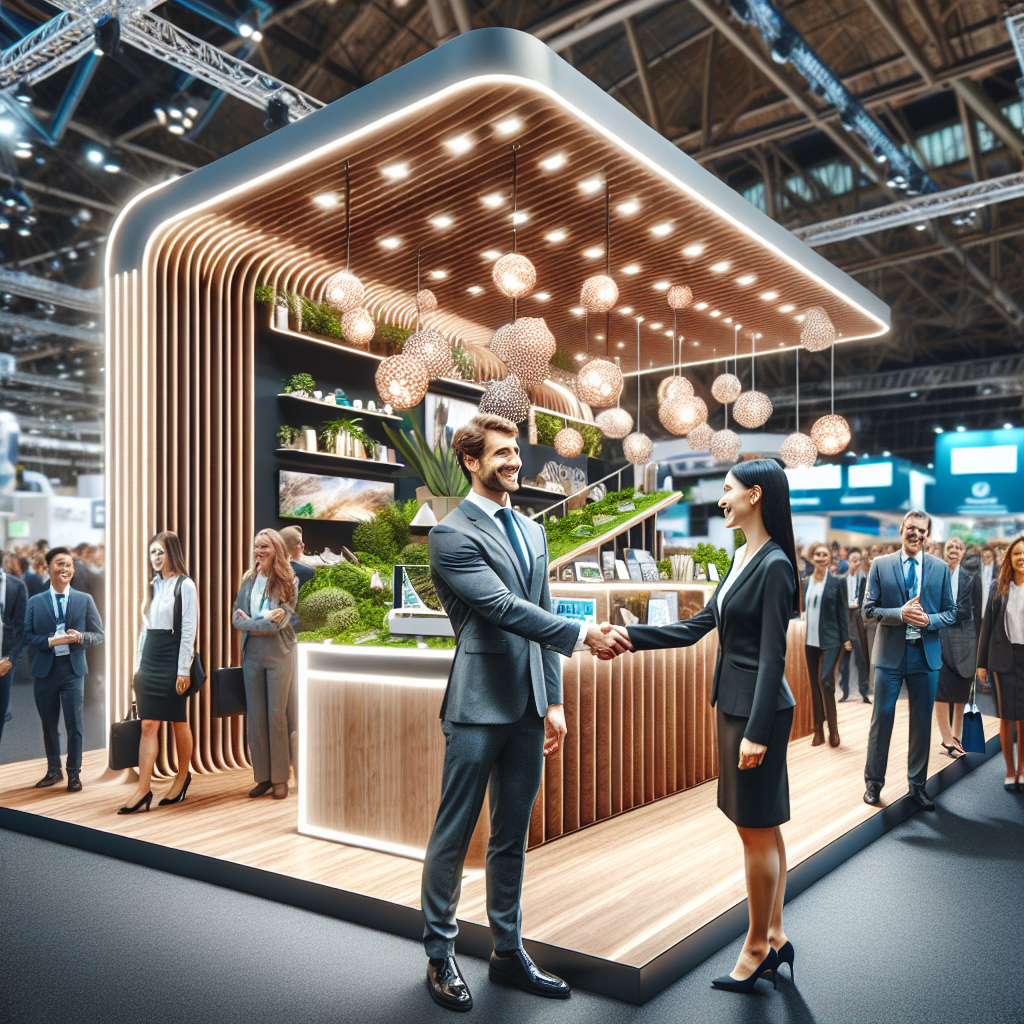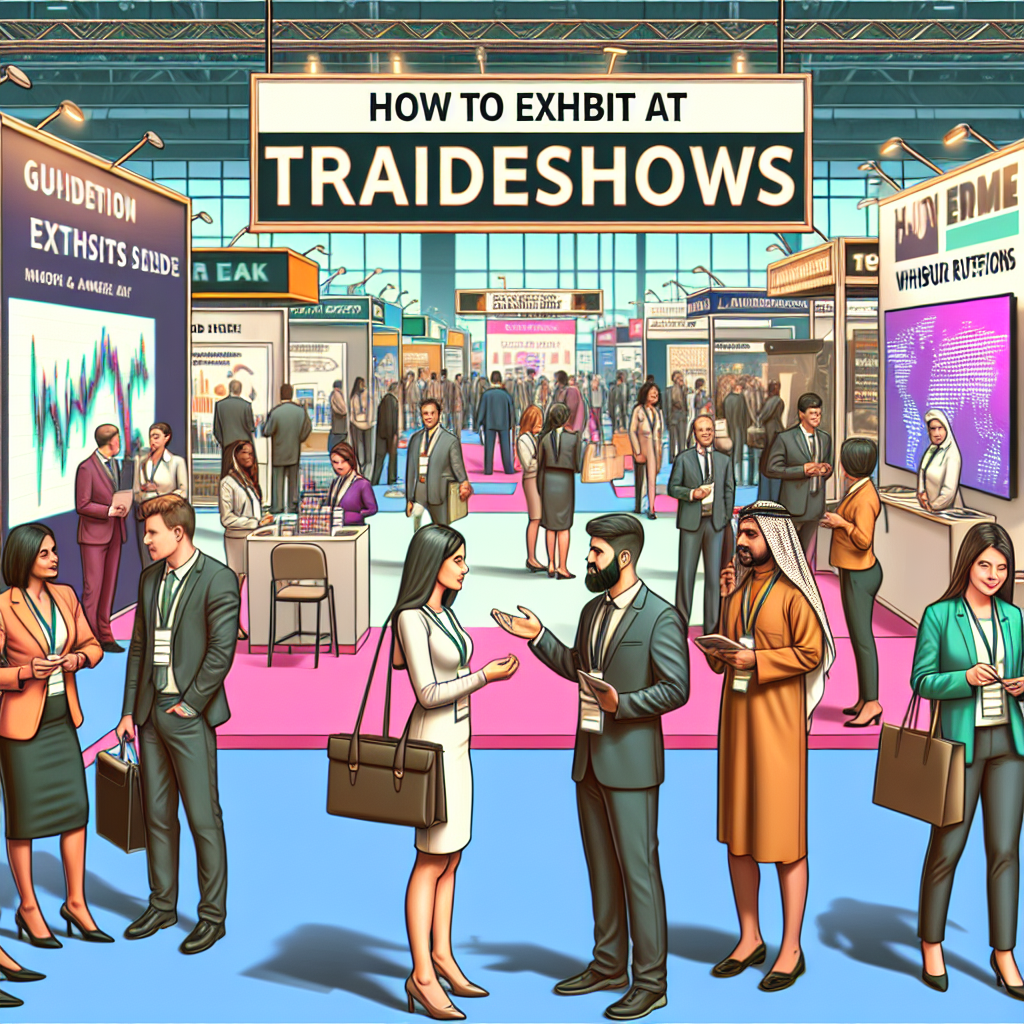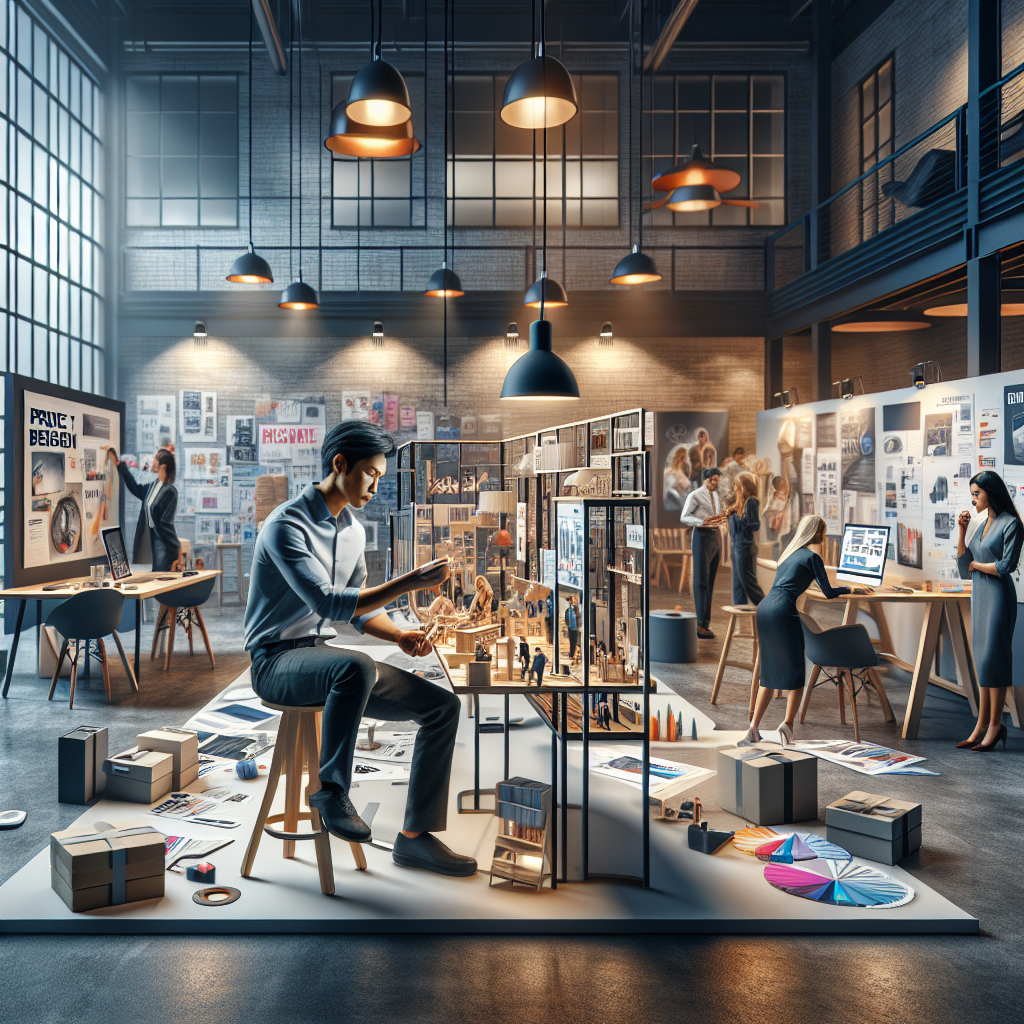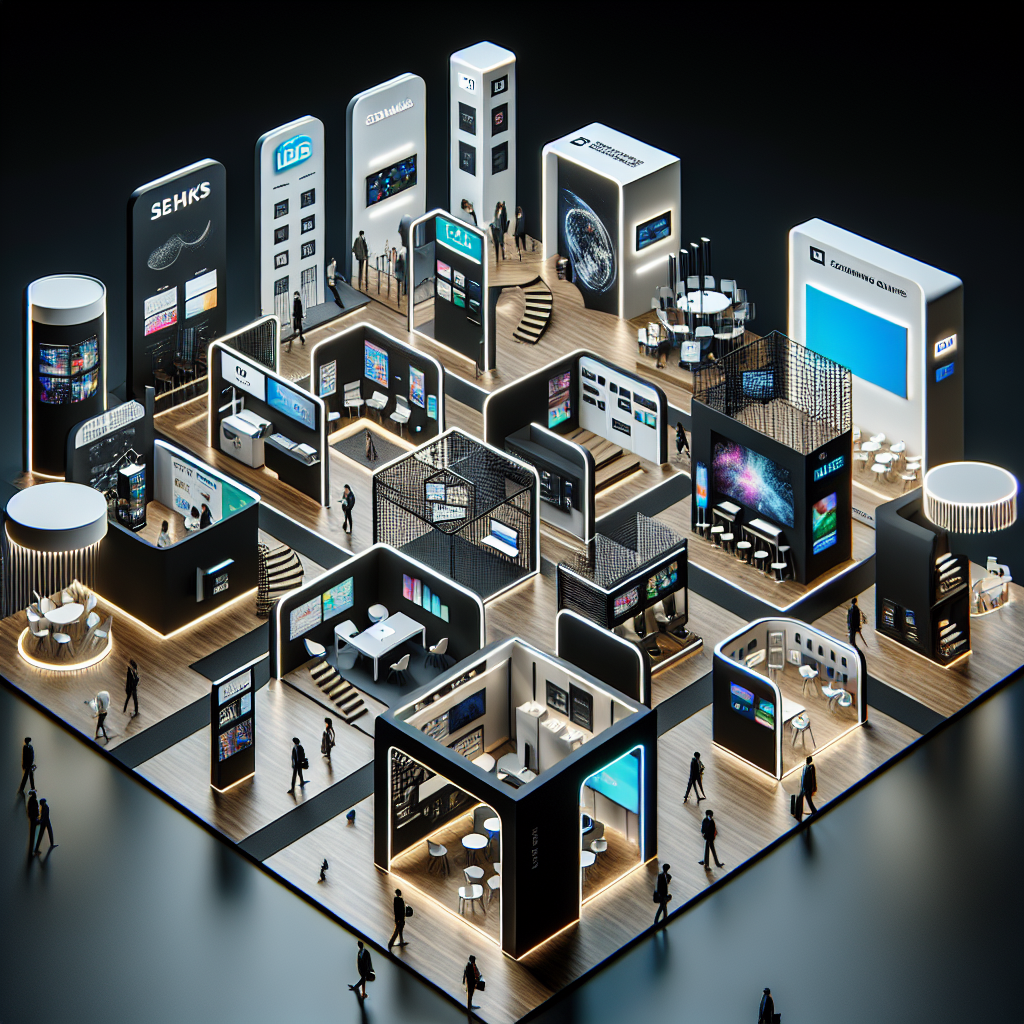The Art of Captivating: Unlocking the Strategies Behind Trade Show Display Signs
Trade show display signs are the unsung heroes of the business world, silently capturing the attention of potential customers and drawing them in like moths to a flame. These seemingly simple signs hold the power to make or break a company’s success at a trade show, where competition is fierce and attention spans are short. In this article, we will delve into the secrets behind creating captivating trade show display signs that steal the show and leave a lasting impression on attendees.
From the choice of colors and fonts to the placement of graphics and text, every element of a trade show display sign is carefully crafted to convey a company’s message and attract visitors to their booth. We will explore the psychology behind color selection, examining how different hues can evoke specific emotions and influence customer behavior. Additionally, we will uncover the art of effective typography, discussing how fonts can convey a brand’s personality and enhance readability. Furthermore, we will reveal the importance of strategic placement and size of graphics and text, as well as the use of eye-catching visuals to create a memorable display. Join us as we unveil the secrets of trade show display signs and discover how these silent heroes steal the show and drive business success.
Key Takeaways:
1. Trade show display signs are a powerful marketing tool that can help businesses steal the show and attract more attention at trade shows and exhibitions.
2. The design of trade show display signs plays a crucial role in capturing the audience’s attention and conveying the brand’s message effectively. Attention-grabbing visuals, bold colors, and concise messaging are key elements to consider.
3. Incorporating technology into trade show display signs can enhance their impact and engagement. Interactive displays, video walls, and digital signage can create a memorable and immersive experience for attendees.
4. Proper placement and strategic positioning of trade show display signs within the booth can significantly increase visibility and foot traffic. Placing signs at eye level, utilizing vertical space, and creating clear pathways are effective strategies to consider.
5. Preparing for a trade show involves careful planning and coordination. Businesses should consider their target audience, set clear goals, and create a cohesive branding strategy to ensure their trade show display signs effectively communicate their message and stand out from the competition.
Insight 1: Trade Show Display Signs as a Powerful Marketing Tool
Trade show display signs have emerged as a powerful marketing tool in the industry, leaving a lasting impact on both exhibitors and attendees. These visually appealing signs play a crucial role in attracting potential customers, creating brand awareness, and generating leads.
With the increasing competition in the trade show industry, businesses are constantly seeking innovative ways to stand out from the crowd. Trade show display signs offer a unique opportunity to captivate the attention of attendees and leave a lasting impression. Whether it’s a towering banner, a vibrant digital display, or an interactive sign, these visually striking elements have the potential to steal the show.
Moreover, trade show display signs serve as a reflection of a company’s brand identity. They provide a platform to showcase the company’s logo, tagline, and key messages, reinforcing brand recognition and recall. By strategically designing these signs, businesses can effectively communicate their value proposition and differentiate themselves from competitors.
Furthermore, trade show display signs serve as a conversation starter, initiating meaningful interactions between exhibitors and attendees. A well-designed sign can pique curiosity, spark interest, and encourage attendees to approach the booth, leading to valuable networking opportunities and potential sales.
Insight 2: The Evolving Trends in Trade Show Display Signs
The world of trade show display signs is constantly evolving, with new trends and technologies reshaping the industry. Exhibitors are embracing innovative techniques to create captivating displays that leave a lasting impact on attendees.
One of the prominent trends in trade show display signs is the integration of technology. Digital signage, LED panels, and interactive displays are gaining popularity, allowing exhibitors to showcase dynamic content and engage with attendees on a deeper level. These technological advancements not only enhance the visual appeal of the signs but also provide a platform for interactive experiences, such as virtual reality demonstrations or touch-screen presentations.
Another emerging trend is the use of sustainable materials in trade show display signs. With the growing emphasis on environmental consciousness, exhibitors are opting for eco-friendly options such as recycled materials, biodegradable fabrics, and energy-efficient lighting. These sustainable signs not only align with the values of environmentally conscious attendees but also contribute to a positive brand image.
Additionally, personalization has become a key aspect of trade show display signs. Exhibitors are leveraging data and analytics to tailor their signage to the specific needs and preferences of their target audience. By incorporating personalized messages, graphics, or even incorporating attendees’ names, exhibitors can create a more memorable and impactful experience.
Insight 3: Measuring the Impact of Trade Show Display Signs
While trade show display signs have proven to be a valuable marketing tool, measuring their impact and return on investment (ROI) has been a challenge for many exhibitors. However, advancements in technology and data analytics are enabling businesses to gain insights into the effectiveness of their signage strategies.
One way to measure the impact of trade show display signs is through lead generation. By incorporating unique QR codes, interactive touchpoints, or digital forms, exhibitors can track the number of leads generated directly from their signage. This data allows businesses to evaluate the success of their signage in driving customer engagement and conversion.
Furthermore, social media engagement can serve as an indicator of the impact of trade show display signs. By encouraging attendees to share photos or posts related to the signage, exhibitors can gauge the reach and influence of their displays. Tracking hashtags, mentions, or user-generated content provides valuable insights into the visibility and brand amplification achieved through the signage.
Lastly, post-event surveys and feedback can provide exhibitors with qualitative data on the effectiveness of their trade show display signs. By asking attendees about their impressions, recall of key messages, and overall experience with the signage, businesses can gather valuable insights to refine their strategies for future events.
Section 1: The Power of Trade Show Display Signs
Trade show display signs play a crucial role in capturing the attention of potential customers and creating a lasting impression. These signs are the first point of contact between a company and its target audience at a trade show. They have the power to attract visitors, convey key messages, and differentiate a brand from its competitors. With the right design, content, and placement, trade show display signs can steal the show and generate significant business opportunities.
Section 2: Designing Effective Trade Show Display Signs
Designing effective trade show display signs requires careful consideration of various elements. First and foremost, the sign should align with the company’s brand identity and convey its core values. It should be visually appealing, with eye-catching graphics, colors, and fonts that grab attention from a distance. Additionally, the sign should be easy to read, with clear and concise messaging. Using high-quality materials and incorporating interactive elements can also enhance the overall impact of the display sign.
Section 3: Maximizing Visibility with Strategic Placement
Even the most well-designed trade show display sign can go unnoticed if it is not strategically placed. To maximize visibility, it is important to position the sign at eye level and in a prominent location within the booth. Placing the sign near the entrance or in high-traffic areas can attract more visitors. Additionally, considering the flow of foot traffic and ensuring that the sign is visible from different angles can further increase its effectiveness.
Section 4: Engaging Visitors with Interactive Display Signs
Interactive display signs have become increasingly popular in trade show environments. These signs allow visitors to interact with the content, providing a more engaging experience. For example, touch screens can be used to showcase product demonstrations or provide interactive quizzes. Augmented reality (AR) and virtual reality (VR) technologies can also be incorporated into display signs to create immersive experiences. By offering interactive elements, companies can capture the attention of visitors and leave a lasting impression.
Section 5: Case Study: XYZ Company’s Successful Trade Show Display Sign
XYZ Company, a leading provider of software solutions, implemented a highly successful trade show display sign at a recent industry event. The sign featured a large LED screen with dynamic visuals showcasing their latest product. The sign was strategically placed at the entrance of their booth, attracting a significant number of visitors. XYZ Company also incorporated interactive elements, allowing visitors to explore the product’s features through a touch screen display. The display sign generated a high level of engagement and led to a substantial increase in leads and sales for XYZ Company.
Section 6: Tips for Creating Memorable Trade Show Display Signs
Creating memorable trade show display signs requires careful planning and execution. Here are some tips to help companies stand out:
1. Know your audience: Tailor the design and messaging of the display sign to resonate with your target audience.
2. Keep it simple: Avoid cluttering the sign with excessive information. Focus on conveying key messages concisely.
3. Use high-quality visuals: Invest in high-resolution graphics and images to ensure a professional and visually appealing display.
4. Incorporate technology: Consider integrating interactive elements, such as touch screens or AR/VR, to create a memorable and engaging experience.
5. Test and iterate: Before the trade show, test the display sign to ensure it is visually appealing, easy to read, and effectively conveys the desired message.
Section 7: Measuring the Impact of Trade Show Display Signs
Measuring the impact of trade show display signs is essential to assess their effectiveness and make improvements for future events. Companies can track metrics such as the number of visitors attracted to the booth, engagement levels with interactive elements, leads generated, and sales conversions. Gathering feedback from booth staff and visitors can also provide valuable insights. By analyzing these metrics and feedback, companies can refine their display sign strategies and optimize their trade show presence.
Section 8: Innovations in Trade Show Display Signs
The world of trade show display signs is constantly evolving, with new innovations emerging to enhance their impact. One such innovation is the use of LED video walls, which offer dynamic and attention-grabbing visuals. Another trend is the integration of artificial intelligence (AI) technology, allowing display signs to personalize content based on visitor preferences. Additionally, the use of holographic displays and projection mapping techniques can create captivating and immersive experiences. Staying updated on these innovations can give companies a competitive edge in the trade show environment.
Section 9: The Future of Trade Show Display Signs
As technology continues to advance, the future of trade show display signs holds exciting possibilities. With the rise of augmented reality (AR) and virtual reality (VR), display signs could become even more immersive and interactive, allowing visitors to experience products and services in a virtual environment. Furthermore, advancements in flexible display technology may enable the creation of curved or bendable signs, adding a new dimension to booth designs. The future of trade show display signs is likely to be a blend of creativity, technology, and personalized experiences.
Trade show display signs are a powerful tool for businesses to showcase their brand, attract visitors, and generate leads. By focusing on design, strategic placement, interactivity, and measuring impact, companies can unlock the secrets to stealing the show at trade shows. As innovations continue to shape the industry, staying ahead of the curve and embracing new technologies will be key to creating memorable and effective display signs.
Understanding Trade Show Display Signs
Trade show display signs play a crucial role in capturing attention, conveying brand messages, and attracting potential customers at trade shows and exhibitions. These signs are designed to stand out amidst a sea of competitors, leaving a lasting impression on attendees. In this technical breakdown, we will delve into the various aspects of trade show display signs and unveil the secrets behind their effectiveness.
1. Design and Layout
The design and layout of a trade show display sign are paramount to its success. A well-designed sign should be visually appealing, easy to read, and aligned with the brand’s identity. It should effectively communicate the key message and create a lasting impact on the viewer.
When it comes to design, factors such as color, typography, and imagery play a significant role. Bold and contrasting colors can attract attention, while legible and eye-catching fonts ensure readability from a distance. The strategic use of images and graphics can enhance the overall visual appeal and convey the intended message effectively.
2. Size and Placement
The size and placement of trade show display signs are crucial for maximizing their impact. Signs should be large enough to be seen from a distance, but not so large that they become overwhelming or obstructive. The ideal size depends on the specific trade show booth and the distance from which attendees will view the sign.
Placement is equally important. Signs should be positioned at eye level to ensure maximum visibility. Placing them strategically near the entrance, at key intersections, or in high-traffic areas can help attract more attention and drive foot traffic towards the booth.
3. Lighting and Illumination
Lighting and illumination can significantly enhance the visibility and appeal of trade show display signs. Well-placed lighting can make the sign stand out in a dimly lit exhibition hall, drawing attention even from a distance.
There are various lighting options available, including spotlights, backlights, and LED lights. Spotlights can be used to highlight specific areas or elements of the sign, while backlights can create a halo effect, making the sign more visually appealing. LED lights are energy-efficient and offer a wide range of color options, allowing for dynamic and attention-grabbing effects.
4. Materials and Construction
The choice of materials and construction techniques used in trade show display signs can impact their durability, portability, and overall quality. Lightweight materials such as foam boards, PVC, or fabric are commonly used to ensure easy transportation and setup.
For outdoor events or trade shows with specific environmental conditions, weather-resistant materials like vinyl or aluminum are preferred. These materials can withstand exposure to sunlight, moisture, and other elements without fading or deteriorating.
5. Interactive and Digital Elements
Incorporating interactive and digital elements into trade show display signs can create a memorable and engaging experience for attendees. Touchscreens, video displays, augmented reality, or QR codes can be integrated to provide additional information, product demonstrations, or interactive games.
These elements not only capture attention but also encourage audience participation and facilitate lead generation. However, it is important to ensure that the interactive elements are seamlessly integrated into the overall design and do not overwhelm or distract from the main message of the sign.
6. Call-to-Action and Contact Information
A trade show display sign should include a clear call-to-action and contact information to prompt attendees to take the desired action. Whether it’s visiting the booth, making a purchase, or contacting the company for more information, a well-crafted call-to-action can drive conversions.
Providing contact information such as phone numbers, email addresses, or website URLs enables interested attendees to easily get in touch with the company after the event. Including social media handles or QR codes can also help extend the engagement beyond the trade show floor.
7. Integration with Overall Booth Design
Lastly, trade show display signs should seamlessly integrate with the overall booth design and branding. Consistency in color schemes, fonts, and imagery helps reinforce the brand identity and ensures a cohesive visual experience for attendees.
The sign should complement other booth elements such as banners, backdrops, and product displays, creating a unified and impactful presence. A well-integrated sign not only attracts attention but also enhances the overall professionalism and credibility of the booth.
By understanding these technical aspects of trade show display signs, businesses can effectively steal the show and leave a lasting impression on trade show attendees. From design and layout to size and placement, each element contributes to the overall success of these signs in capturing attention, conveying brand messages, and driving business opportunities.
The Origins of Trade Show Display Signs
Trade shows have been an integral part of business promotion for centuries. The concept of showcasing products and services in a centralized location to attract potential customers dates back to ancient times. In ancient Egypt, merchants would gather in designated marketplaces to display their wares, using signage and visual cues to attract buyers.
However, it was during the Industrial Revolution in the 18th and 19th centuries that trade shows began to take on a more organized and formalized structure. As advancements in transportation and communication made it easier for businesses to reach larger audiences, trade shows became a popular method for companies to showcase their products to a wider customer base.
The Evolution of Trade Show Display Signs
Initially, trade show display signs were simple and utilitarian. They primarily consisted of hand-painted wooden boards or banners with basic information about the products or services being offered. These signs were often displayed on makeshift booths or tables, and their main purpose was to attract attention and provide essential details to potential customers.
As technology advanced, so did the design and functionality of trade show display signs. In the early 20th century, the of electric lighting allowed for more eye-catching and dynamic signage. Neon signs, with their vibrant colors and glowing effects, became a popular choice for trade show exhibitors looking to stand out from the competition.
With the advent of digital printing and graphic design software in the late 20th century, trade show display signs underwent a significant transformation. Companies could now create highly customized and visually appealing signs using computer-generated graphics and high-resolution images. This revolutionized the way businesses presented themselves at trade shows, as they could now incorporate their branding elements and create a cohesive visual identity.
The Impact of Technology on Trade Show Display Signs
Technology has played a crucial role in shaping the current state of trade show display signs. The rise of digital displays, LED screens, and interactive touchscreens has allowed businesses to engage with their audience in more immersive and interactive ways. These modern display signs can showcase videos, animations, and even allow visitors to interact with the content, creating a more memorable and engaging experience.
Social media and online marketing have also had a significant impact on trade show display signs. Companies now use hashtags and social media handles on their signs to encourage attendees to share their experiences online, amplifying the reach of their brand beyond the confines of the trade show floor. This integration of online and offline marketing has become essential for businesses looking to maximize their trade show presence.
The Future of Trade Show Display Signs
As technology continues to advance, the future of trade show display signs looks promising. Augmented reality (AR) and virtual reality (VR) are already making their way into trade show exhibits, allowing visitors to experience products and services in a completely immersive and interactive manner. These technologies have the potential to revolutionize the trade show industry, providing businesses with new and exciting ways to engage with their audience.
Furthermore, sustainability and eco-friendliness are becoming increasingly important considerations for trade show exhibitors. The use of recyclable materials, energy-efficient lighting, and digital displays can help reduce waste and minimize the environmental impact of trade show display signs.
Trade show display signs have evolved significantly over time, from simple wooden boards to high-tech digital displays. The historical context of trade shows, combined with advancements in technology, has shaped the current state of trade show display signs. As businesses continue to seek innovative ways to attract customers and create memorable experiences, it will be fascinating to see how trade show display signs further evolve in the future.
Case Study 1: Company X Boosts Sales with a Captivating Trade Show Display Sign
In 2019, Company X, a leading technology firm, decided to participate in a major trade show to promote their latest product launch. They understood the importance of creating an impactful trade show display sign to attract attendees and generate leads.
Company X partnered with a renowned design agency specializing in trade show displays. Together, they developed a unique concept that incorporated the company’s branding and showcased the key features of their new product.
The trade show display sign featured a large LED screen displaying dynamic visuals of the product in action. The sign also included clear and concise messaging, highlighting the product’s benefits and competitive advantages.
During the trade show, the captivating display sign caught the attention of attendees from across the exhibition hall. The stunning visuals and compelling messaging drew people in, sparking their curiosity and driving them to visit Company X’s booth.
As a result of the eye-catching trade show display sign, Company X experienced a significant increase in booth traffic compared to previous shows. The engaging visuals and persuasive messaging helped the company stand out among competitors and attract potential customers.
Moreover, the trade show display sign served as an effective conversation starter. Attendees were naturally drawn to the booth, allowing the sales team to initiate conversations and showcase the product’s features in person. This led to a higher conversion rate and an increase in sales for Company X.
Case Study 2: Small Business Y Makes a Big Impact with a Creative Trade Show Display Sign
Small Business Y, a local artisanal bakery, aimed to expand its customer base and increase brand awareness. They recognized the potential of participating in a trade show to reach a wider audience and decided to invest in a creative trade show display sign.
The bakery collaborated with a graphic designer who specialized in custom signage. Together, they brainstormed a unique concept that would reflect the bakery’s brand identity and showcase their delicious products.
The trade show display sign featured a life-sized replica of a cake, crafted with meticulous attention to detail. The sign also incorporated mouth-watering visuals of the bakery’s signature desserts, along with the aroma of freshly baked goods wafting through the booth.
The creative trade show display sign immediately captured the attention of attendees passing by. Its realistic design and enticing visuals created a sense of intrigue and enticed people to stop and learn more about Small Business Y.
As a result, the bakery experienced a surge in booth traffic, with attendees eager to sample their delectable treats. The trade show display sign acted as a powerful marketing tool, drawing people in and generating buzz around the bakery’s offerings.
Small Business Y also leveraged the trade show display sign to collect contact information from interested attendees. By offering a special discount to those who signed up for their newsletter, they were able to build a substantial email list of potential customers.
The success of the trade show display sign translated into increased sales and brand recognition for Small Business Y. Attendees who had sampled their products at the trade show became loyal customers, spreading positive word-of-mouth and further boosting the bakery’s growth.
Case Study 3: Non-Profit Organization Z Raises Awareness with an Impactful Trade Show Display Sign
Non-Profit Organization Z was dedicated to raising awareness about environmental conservation. They recognized the importance of participating in trade shows to reach a wider audience and garner support for their cause.
To make a lasting impression, Non-Profit Organization Z collaborated with a creative agency specializing in eco-friendly signage. Together, they designed a trade show display sign that not only captured attention but also conveyed the organization’s mission and values.
The trade show display sign featured a visually striking representation of a polluted landscape gradually transforming into a lush, green environment. The sign incorporated interactive elements, allowing attendees to actively engage with the display and learn about the organization’s initiatives.
The impactful trade show display sign immediately caught the eye of attendees concerned about environmental issues. Its thought-provoking visuals and interactive features sparked conversations and inspired individuals to take action.
Non-Profit Organization Z utilized the trade show display sign as a platform to educate attendees about the importance of environmental conservation. They distributed informative brochures and encouraged visitors to sign up for volunteer opportunities and donate to their cause.
The trade show display sign not only raised awareness about Non-Profit Organization Z but also inspired attendees to become actively involved in environmental conservation efforts. The organization witnessed a surge in volunteer sign-ups, donations, and public support as a direct result of their impactful trade show display sign.
These case studies demonstrate the power of well-designed and captivating trade show display signs. Whether it’s boosting sales, increasing brand recognition, or raising awareness for a cause, a strategically crafted trade show display sign can steal the show and leave a lasting impression on attendees.
FAQs
1. What are trade show display signs?
Trade show display signs are visual elements used to attract attention and convey key messages at trade shows or exhibitions. These signs can include banners, posters, backdrops, pop-up displays, and digital screens.
2. Why are trade show display signs important?
Trade show display signs are crucial for grabbing the attention of attendees in a crowded exhibition hall. They help to create a visually appealing booth, communicate brand messages, and highlight products or services, ultimately driving traffic and generating leads.
3. How can I make my trade show display signs stand out?
To make your trade show display signs stand out, consider the following tips:
- Use bold and eye-catching colors
- Create a clear and concise message
- Incorporate high-quality graphics and images
- Choose the right size and placement for maximum visibility
- Utilize lighting or interactive elements
4. What materials are commonly used for trade show display signs?
Common materials used for trade show display signs include:
- Vinyl
- Fabric
- Corrugated plastic
- Acrylic
- Aluminum
5. Can I reuse trade show display signs?
Yes, many trade show display signs are designed to be reusable. By investing in high-quality materials and structures, you can easily dismantle and transport them to multiple events. Be sure to properly store and maintain your signs to ensure their longevity.
6. How can I incorporate technology into my trade show display signs?
There are several ways to incorporate technology into your trade show display signs:
- Use interactive touchscreens or tablets to engage attendees
- Integrate LED screens or video walls to showcase dynamic content
- Incorporate QR codes or NFC technology for easy information retrieval
- Utilize augmented reality or virtual reality experiences
7. What are some common mistakes to avoid when designing trade show display signs?
When designing trade show display signs, it’s important to avoid these common mistakes:
- Cluttered or confusing messaging
- Poor color choices that don’t align with your brand
- Low-resolution graphics or images
- Text that is too small or difficult to read from a distance
- Overcomplicating the design
8. How far in advance should I start planning my trade show display signs?
It’s recommended to start planning your trade show display signs at least three to four months in advance. This allows enough time for design, production, and any necessary revisions. Starting early also ensures you have enough time to address any unexpected issues that may arise.
9. Can I hire professionals to design and produce my trade show display signs?
Yes, many companies specialize in designing and producing trade show display signs. Hiring professionals can save you time and ensure you have high-quality signs that effectively represent your brand. They can also provide valuable insights and recommendations based on their experience.
10. How can I measure the success of my trade show display signs?
Measuring the success of your trade show display signs can be done through various metrics, including:
- Lead generation: Track the number of leads generated during the event
- Booth traffic: Monitor the foot traffic at your booth
- Social media engagement: Measure the number of social media mentions or interactions related to your display
- Direct feedback: Collect feedback from attendees on the effectiveness of your signs
Concept 1: Branding and Visibility
When it comes to trade show display signs, one of the most important concepts to understand is branding and visibility. Your brand is what sets your business apart from others, and it’s crucial to make it stand out at trade shows. A trade show display sign is a powerful tool that helps you create brand recognition and attract potential customers.
Branding is all about creating a consistent and memorable image for your business. It includes elements such as your logo, colors, fonts, and overall design. When designing your trade show display sign, it’s important to incorporate these branding elements to ensure consistency and reinforce your brand identity.
Visibility, on the other hand, refers to how easily your trade show display sign can be seen and noticed by attendees. The goal is to make your sign highly visible from a distance, so people are drawn to your booth. This can be achieved through various techniques, such as using bold and contrasting colors, large fonts, and eye-catching graphics.
Concept 2: Call to Action
A call to action is a key concept in marketing and is just as important when it comes to trade show display signs. A call to action is a statement or instruction that encourages people to take a specific action. In the context of trade shows, it’s about persuading attendees to visit your booth, engage with your products or services, and ultimately become customers.
When designing your trade show display sign, it’s crucial to include a clear and compelling call to action. This can be as simple as a statement like “Visit our booth for exclusive offers” or “Try our new products today.” The call to action should be prominently displayed on your sign and easily understandable at a glance.
It’s important to note that a call to action should be specific and actionable. Avoid vague statements like “Learn more” or “Find out why we’re the best.” Instead, provide a specific benefit or incentive for attendees to take action, such as a discount, free sample, or a chance to win a prize.
Concept 3: Effective Use of Space
Trade show booths often have limited space, and it’s essential to make the most of it. Effective use of space is a concept that involves maximizing the impact of your trade show display sign within the given booth space.
One important aspect of effective space utilization is determining the optimal size and placement of your trade show display sign. It should be large enough to be easily seen from a distance but not so large that it overwhelms your booth or obstructs other elements. Consider the layout of your booth and strategically position your sign where it will have the most visibility and impact.
In addition to size and placement, consider the overall layout and design of your booth. Your trade show display sign should complement and enhance the overall aesthetics of your booth. Use other visual elements, such as banners, backdrops, and product displays, to create a cohesive and visually appealing booth that attracts attention and engages attendees.
Furthermore, effective use of space also involves organizing and arranging your booth in a way that allows for easy navigation and interaction. Consider the flow of traffic and ensure that your trade show display sign doesn’t create any barriers or obstacles. Create a welcoming and inviting space that encourages attendees to explore your booth and learn more about your business.
Common Misconceptions About ‘Stealing the Show: Unveiling the Secrets of Trade Show Display Signs’
Misconception 1: Trade show display signs are only for large companies
One common misconception about trade show display signs is that they are only beneficial for large companies with extensive marketing budgets. However, this couldn’t be further from the truth. Trade show display signs can be valuable for businesses of all sizes, including small and medium-sized enterprises (SMEs).
Trade shows provide a unique opportunity for businesses to showcase their products or services to a targeted audience. By investing in a well-designed display sign, even smaller companies can attract attention and stand out from the competition. In fact, trade show display signs can level the playing field and allow SMEs to compete with larger corporations.
Furthermore, trade show display signs come in various sizes and formats, making them adaptable to different budgets. Whether it’s a simple banner or a more elaborate booth display, there are options available for businesses of all sizes.
Misconception 2: Trade show display signs are outdated in the digital age
With the rise of digital marketing, some may believe that trade show display signs have become outdated and ineffective. However, this is a misconception that fails to consider the unique benefits of physical signage in a digital age.
While online marketing strategies like social media and email campaigns are undoubtedly important, trade shows offer a face-to-face interaction that cannot be replicated digitally. Trade show display signs provide a tangible and immersive experience for attendees, allowing them to engage with a brand on a personal level.
Additionally, trade show display signs can be integrated with digital elements to create a dynamic and interactive experience. Incorporating technologies such as touchscreen displays, virtual reality, or QR codes can enhance the effectiveness of trade show signage and create a memorable impression.
Furthermore, trade show display signs serve as a visual anchor in a crowded exhibition hall, attracting visitors and guiding them towards a booth. In a digital age where attention spans are shorter than ever, a well-designed and eye-catching display sign can make a lasting impact.
Misconception 3: Any design will suffice for trade show display signs
Another common misconception is that any design will suffice for trade show display signs. However, the reality is that a poorly designed sign can be detrimental to a company’s success at a trade show.
Trade show environments are highly competitive, with numerous exhibitors vying for attention. A well-designed display sign is crucial to capturing the interest of attendees and conveying a brand’s message effectively.
When designing a trade show display sign, several factors need to be considered. The sign should align with the company’s branding and effectively communicate its unique selling points. It should be visually appealing, with attention-grabbing colors, fonts, and graphics. Additionally, the sign’s content should be concise, informative, and easy to read from a distance.
Working with a professional graphic designer or a marketing agency experienced in trade show signage can ensure that the design meets these criteria and maximizes its impact. Investing in a well-designed display sign is an investment in the success of a trade show appearance.
By debunking these common misconceptions about trade show display signs, it becomes clear that they are a valuable tool for businesses of all sizes. Whether it’s a small startup or a large corporation, trade show display signs can help attract attention, create memorable experiences, and convey a brand’s message effectively. By understanding the unique benefits of trade show display signs and investing in high-quality designs, businesses can make the most out of their trade show appearances and steal the show.
1. Understand the Purpose of Your Display Sign
Before designing your trade show display sign, it’s crucial to understand its purpose. Are you trying to attract attention, convey information, or generate leads? Knowing your objective will help you create a sign that effectively communicates your message.
2. Keep It Simple
When it comes to trade show display signs, less is more. Avoid cluttering your sign with excessive text or graphics. Instead, focus on a clear and concise message that can be easily understood from a distance. Use bold headlines, bullet points, and simple imagery to grab attention.
3. Choose the Right Colors
Colors play a significant role in attracting attention and evoking emotions. Use colors that align with your brand and create a sense of harmony. Consider the psychology of colors – for example, blue conveys trust and professionalism, while red signifies energy and excitement. Experiment with different color combinations to find what works best for your message.
4. Use Eye-Catching Fonts
The font you choose can greatly impact the readability and visual appeal of your display sign. Select a font that is easy to read from a distance, and consider using a combination of fonts to add visual interest. Avoid overly decorative or complex fonts that may make your message difficult to comprehend.
5. Incorporate High-Quality Images
Images can be powerful tools for capturing attention and conveying your message. Use high-resolution images that are relevant to your brand or product. Avoid using generic stock photos and instead opt for original visuals that reflect your unique offering.
6. Create a Strong Call to Action
A compelling call to action is essential to prompt visitors to take the desired next step. Whether it’s visiting your booth, signing up for a newsletter, or making a purchase, make sure your call to action is clear and actionable. Use action verbs and create a sense of urgency to encourage immediate response.
7. Test Your Sign’s Visibility
Before the trade show, test your display sign’s visibility from different angles and distances. Consider the height at which it will be displayed and ensure it can be easily seen by passersby. Make any necessary adjustments to maximize its impact.
8. Engage with Attendees
Your trade show display sign is just the beginning. Engage with attendees by initiating conversations, answering questions, and demonstrating your product or service. Use your sign as a conversation starter and be prepared to provide further information or demonstrations.
9. Track and Evaluate Results
After the trade show, it’s important to track and evaluate the effectiveness of your display sign. Did it attract the desired attention? Did it generate leads or conversions? Analyze the data and make adjustments for future trade shows.
10. Continuously Improve
Trade show display signs are an ongoing process of improvement. Learn from each experience and incorporate feedback to refine your design and messaging. Stay updated with current trends and technologies to ensure your signs remain fresh and impactful.
Conclusion
Trade show display signs are a crucial element in capturing the attention of attendees and making a lasting impression. Through our exploration of the secrets behind these signs, we have discovered several key points that exhibitors should keep in mind. Firstly, the design of the sign is paramount, with bold and eye-catching visuals, clear messaging, and a cohesive brand identity being essential. Additionally, the use of technology, such as LED screens and interactive displays, can greatly enhance the overall impact of the sign.
Furthermore, proper placement and strategic positioning of the signs within the trade show booth can significantly increase their effectiveness. By placing signs at eye level, incorporating them into the booth’s layout, and ensuring they are visible from a distance, exhibitors can maximize their reach and attract more visitors. Lastly, the importance of pre-show promotion and post-show follow-up cannot be overstated. By generating buzz before the event and engaging with attendees after it, exhibitors can extend the lifespan of their trade show display signs and continue to reap the benefits long after the show has ended.

